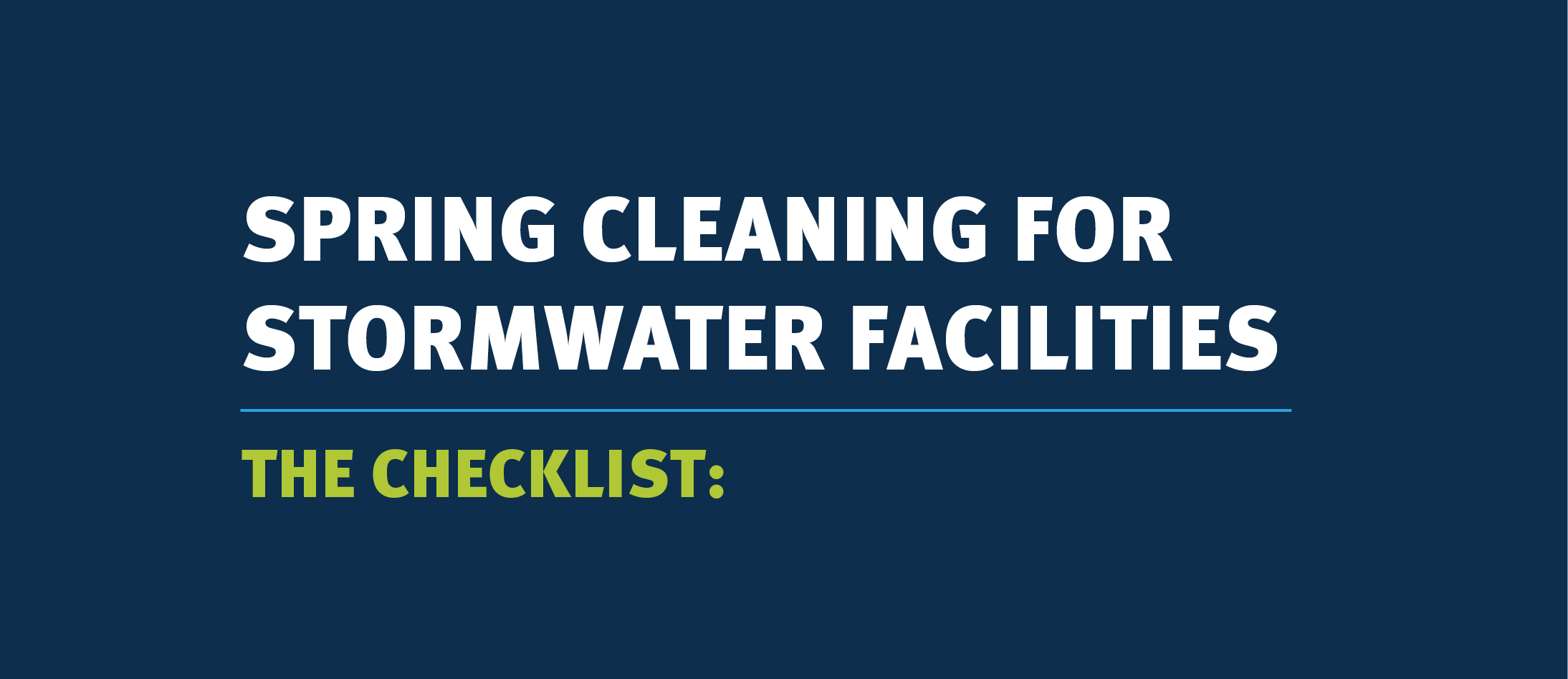Spring Cleaning for Stormwater Facilities
by Jim Leamy, Senior Manager of Quality Assurance
It’s that time of year again when days are getting longer, temperatures are getting higher, and the first flowers start to make their reappearance. This is a great opportunity to start anew, spring-clean ones’ home, and clean your stormwater facilities. The winter months are often a time when stormwater systems are neglected and left to collecting dirt, debris and trash that can accumulate within your system. Not to mention the effects that sand and salt used on roads for their anti-freeze properties have on systems. An increase in salinity, or amount of dissolved salts, is harmful to almost all marine life, and sand is an excellent transporter of oils and metals that pollute water and clog stormwater systems. Freezing and thawing winter temperatures can also have a negative effect, causing displacement or other damages to ground-level structures.
So, what does stormwater spring cleaning look like? Here is a good starting checklist, but every system is different. Yours might need some more focus in certain areas and less in others.
Checklist:
- Inspect all inlets and forebays for sediment accumulation. If present, that material needs to be collected for disposal offsite.
- Check the outfall device (Riser, Outlet, or other devices that controls the water level in the basin). Low flow orifices or weirs could be clogged. These outfall devices are critical to basin performance and should be cleaning monthly.
- Check storm drains and storm pipes for any blockages or standing water. If standing water is found, larger subsurface issues could be present and need to be addressed as soon as possible.
- Remove any dead trees and limbs from the basin before they become an issue.
- Aerate and overseed the slope of the basin. Just like your lawn, a stormwater facility can benefit from this service. If coverage improves then less sediment will make its way from the slope down into your basin, thus increasing the lifespan of your facility. It is often recommended that no fertilizer be used around stormwater basins. If it is used, it is very important to ensure that no fertilizer is applied to or comes in contact with stormwater. One of the goals of stormwater management is to remove nutrients from water, not add them. Note: If you have areas of your basin that have a difficult time growing grass, it is recommended that a soil sample is taken. State agriculture resources that can study the soil sample are often available free of charge or for a minimal fee. It can indicate the pH levels of the soils in your system. With that information, you can adjust your approach to the application of any soil amendment.
- Develop a proper maintenance plan that includes monthly visits to the stormwater facility during the growing season, and at least a few during the dormant winter months.
If you need help with any of these steps or would like a professional assessment of your stormwater facility, please reach out to AQUALIS for a free estimate and consultation. It would be our pleasure to take a look at your stormwater facilities!
